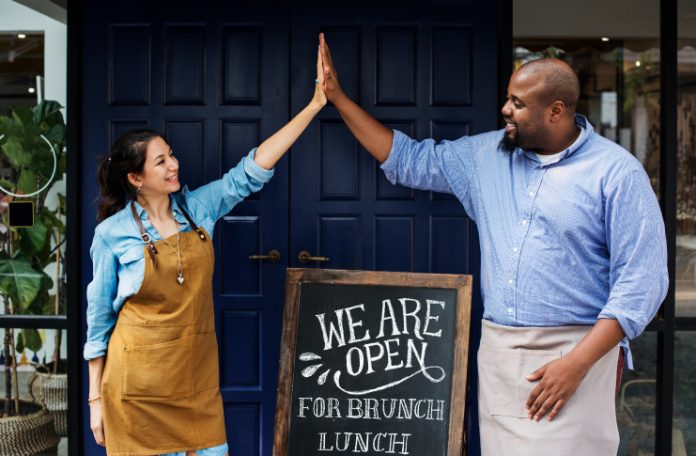Navigating the Gastronomic Journey: A Comprehensive Guide on Starting and Running a Successful Restaurant
Embarking on the journey of opening a new restaurant is nothing short of exhilarating. It’s a venture filled with the promise of both rewarding experiences and inevitable challenges. The culmination of efforts, from crafting a robust business plan to selecting the perfect location and assembling an efficient team, plays a pivotal role in the ultimate success of your gastronomic endeavor.
Restaurant Service Styles
Restaurants, diverse in their offerings, are typically classified into three primary categories: quick-service, midscale, and upscale. Quick-service establishments, often synonymous with fast-food, provide a limited menu of items prepared swiftly and sold at affordable prices. Beyond the conventional burgers and fries, these establishments cater to a variety of tastes, serving everything from chicken and hot dogs to pizza and ethnic delicacies.
Midscale restaurants strike a balance between quick-service and upscale dining. Positioned as value-driven, they offer a mix of limited and full-service options, with some providing table service and others adopting a counter-based approach. The emphasis here is on providing good value with enticing special offers.
Upscale restaurants, on the other hand, focus on delivering a premium dining experience. Offering full table service and prioritizing culinary excellence and ambiance over affordability, these establishments often feature on the must-visit lists for tourists seeking a taste of exceptional cuisine from renowned chefs.
Selecting a Food Concept
Choosing the right food concept is crucial for setting the tone of your restaurant. The concept not only communicates what patrons can expect but also provides a framework for your operation. From seafood and steakhouses to family-style and ethnic restaurants, each concept has its unique appeal.
Seafood
Ranging from quick-service to upscale, seafood establishments offer a variety of dishes, with quality and freshness being key considerations.
Steakhouses
Positioned in both midscale and upscale markets, steakhouses cater to diverse preferences. Midscale steakhouses emphasize family-friendly environments, while upscale ones focus on formality and superior meat quality.
Family-style Restaurants
Geared towards family and senior customers, these establishments balance reasonable prices with speedy service, offering a broad menu to cater to a wide audience.
Casual Dining Restaurants
With midrange prices and a variety of food items, these restaurants appeal to a broad demographic, often centering on a thematic menu.
Ethnic Restaurants
Thriving in cultural diversity, ethnic restaurants span a range of cuisines, with popular ones including Italian, Chinese, and Mexican.
Pizzeria
Offering a choice between to-go or full-service, pizzerias anchor their success in crafting quality pizzas and creating an inviting atmosphere.
Sandwich Shop/Delicatessen
Enjoying high-profit margins, these establishments adapt quickly to evolving tastes, incorporating healthy ingredients and diversifying their menus.
Coffeehouse
Beyond the popularity of coffee, these establishments serve as social hubs, offering various beverages, baked goods, and a welcoming ambiance.
Bakery
Evolving beyond traditional bread-only retail, bakeries today offer a range of items, including cakes, scones, and even full dining menus.
How to Start a Restaurant
The journey of starting a restaurant involves multifaceted responsibilities, extending from crafting menus and ordering inventory to managing personnel and navigating regulatory compliance. Working in a similar establishment before venturing out on your own provides invaluable insights into the nuances of the business.
A well-crafted business plan serves as the foundation for a successful restaurant. While professional assistance is ideal, a comprehensive plan should include realistic projections, industry trends, and thorough competition analyses. Financial requirements vary based on factors like business type, facility, equipment, and marketing strategies.
Location Matters
Choosing the right location is a critical aspect of restaurant success. Factors such as pedestrian traffic, parking facilities, proximity to other businesses, and the history of the site must be carefully evaluated. Additionally, understanding the terms of the lease, anticipating future developments, and ensuring an attractive appearance are vital considerations.
Once the location is secured, the focus shifts to establishing the restaurant. Defining the concept, creating a menu, designing the layout, hiring staff, and initiating marketing efforts are integral components of this phase. A well-thought-out plan lays the groundwork for a flourishing food-service business.
Crafting a Menu
The menu is a centerpiece of the dining experience and a crucial factor in attracting and retaining customers. Trends in menu content and design, including vegetarian options, locally sourced produce, fusion dishes, and diverse beverages, influence the overall direction of food-service businesses. A thoughtful and dynamic menu aligns with consumer preferences, ensuring a memorable dining experience.
Safety Regulations
While the food-service industry may not be as heavily regulated as some sectors, adherence to safety regulations is paramount. From sanitation and fire safety to compliance with alcohol and tobacco laws, understanding and meeting legal requirements is essential. A collaborative approach with regulatory agencies helps navigate the complexities of the regulatory landscape.
Hiring Employees
The challenge of finding qualified labor is a universal concern in the food-service industry. Crafting detailed job descriptions, establishing competitive pay scales, conducting background checks, and providing comprehensive training are key elements of a successful HR program. Understanding wage-and-hour laws, reporting tips correctly, and fostering a positive work environment contribute to employee satisfaction and retention.
In the restaurant business, personnel categories span managers, chefs, cooks, servers, busboys, dishwashers, hosts, and bartenders. Flexibility in duties, especially in the early stages, is crucial. Managers, in particular, play a pivotal role, and hiring experienced individuals ensures efficient operations. Chefs and cooks, responsible for the culinary aspect, must exhibit top-notch skills to meet customer expectations. Servers, the face of the restaurant, require a combination of efficiency and a pleasant demeanor to enhance the overall dining experience.
Conclusion
Starting and running a restaurant is undeniably challenging, but with meticulous planning, dedication, and a focus on customer satisfaction, it can be a highly rewarding endeavor. From conceptualizing the restaurant service style to navigating safety regulations and hiring a proficient team, every step contributes to the overall success of the gastronomic venture. In the dynamic world of food service, adapting to evolving trends, maintaining high-quality standards, and creating a memorable experience for patrons are key ingredients for sustained success.

